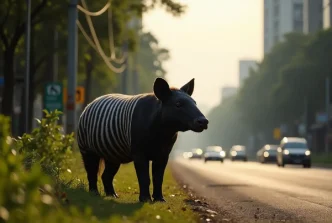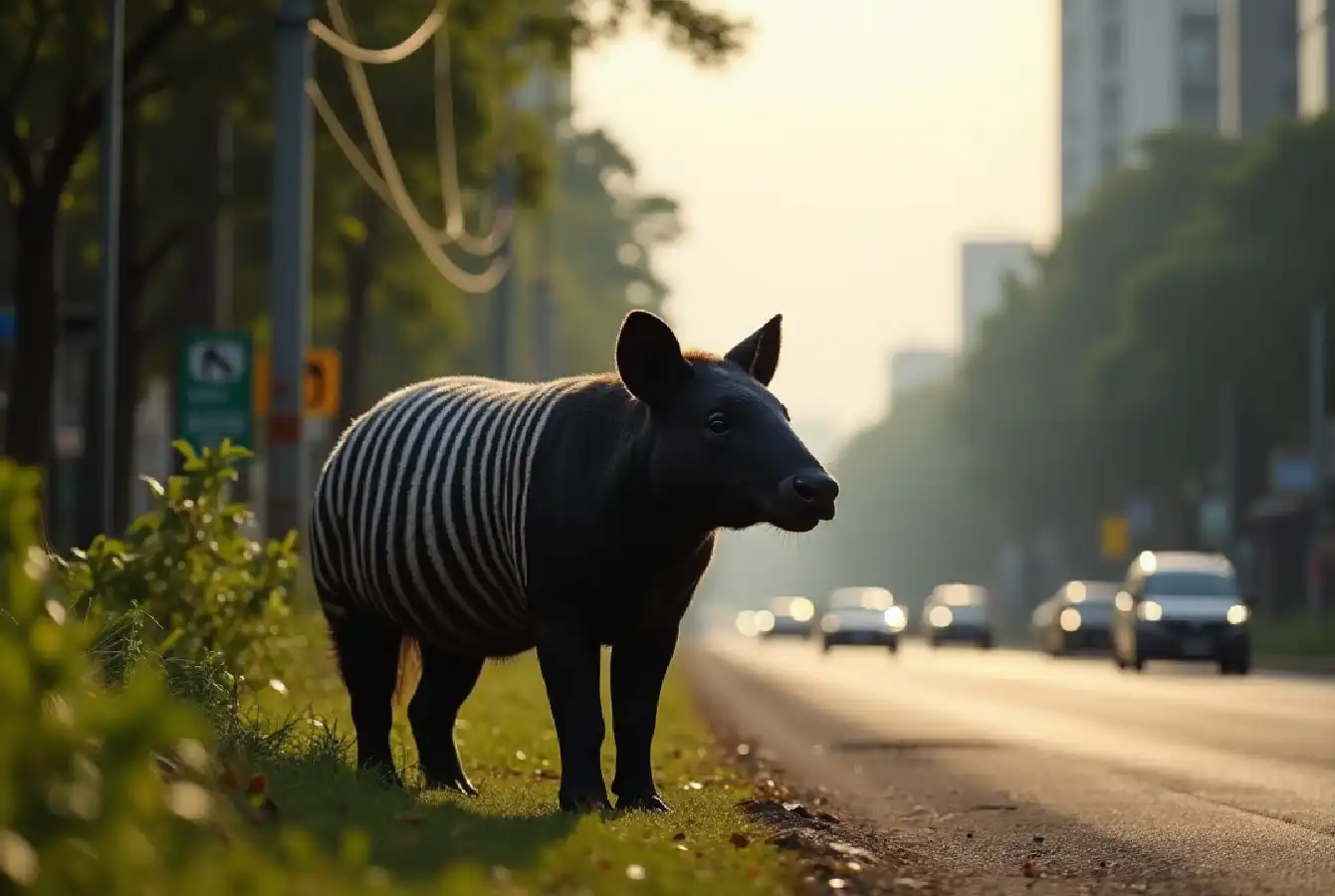In Malaysia, the Malayan tapir, a striking black-and-white mammal often described as a living fossil, has earned a tragic distinction: it is the most frequently road-killed large mammal in the country. According to the Wildlife and National Parks Department (Perhilitan), 112 tapirs were struck by vehicles between 2020 and 2024, a stark indicator of the growing conflict between urban expansion and wildlife conservation. With only 700 to 800 tapirs estimated to remain in their natural habitats, as stated by Natural Resources and Environmental Sustainability Minister Nik Nazmi Nik Ahmad last month, the urgency to protect this endangered species has never been greater.
A Deadly Toll on Malaysia’s Wildlife
The statistics paint a grim picture. Over the same five-year period, Perhilitan recorded 2,336 wild animals killed by vehicles nationwide, with 522 incidents in 2024 alone. While monitor lizards top the list with 548 deaths, followed by macaques (487) and wild boar (329), the loss of large mammals like the Malayan tapir, Asian elephants (6 deaths), and Malayan tigers (4 deaths) carries a disproportionate impact due to their endangered status. Sun bears and black panthers, with nine deaths each, also underscore the vulnerability of Malaysia’s iconic species.
These numbers reflect more than just accidents; they highlight the broader consequences of habitat fragmentation. As deforestation and land-use changes shrink natural habitats, wildlife are forced to navigate human-modified landscapes, often crossing busy roads to access food, water, shelter, or mating opportunities. “Many of these incidents are linked to recent deforestation or land-use change that leads to habitat fragmentation” said a Perhilitan spokesperson to local media. The department also noted that ecological factors, such as escaping high human activity or pollution, push animals into risky territories.
The Human-Wildlife Conflict Intensifies
One particularly heart-wrenching incident on Mother’s Day this year brought the issue into sharp focus. Along the Gerik-Jeli Highway, a mother elephant was seen grieving beside her fatally injured calf, struck down by a vehicle. The image struck a chord with the public, amplifying calls for stronger measures to protect Malaysia’s wildlife. Such scenes are not isolated; they are symptomatic of a deeper clash between development and conservation.
Most wildlife-vehicle collisions occur at night or in areas with poor visibility, such as sharp bends or winding roads, according to Perhilitan. The nocturnal behavior of many species, including the Malayan tapir, makes them harder for motorists to spot during low-light conditions. This temporal pattern adds another layer of complexity to addressing the problem, as solutions must account for both human behavior and animal instincts.
Efforts to Mitigate the Crisis
Perhilitan has not been idle in the face of this crisis. The department has implemented several measures to reduce wildlife roadkill, including the installation of warning signs, solar-powered amber lights, and transverse bars on roads to slow down vehicles. In collaboration with the Public Works Department, wildlife crossing viaducts have been constructed in select locations to provide safe passage for animals. Additionally, Perhilitan conducts rescue and relocation operations to move wildlife to more suitable habitats away from high-traffic areas.
“These incidents are largely preventable” said a department representative, urging drivers to adhere to speed limits, particularly in known wildlife hotspots. Slower speeds, they argue, can significantly reduce the risk of collisions by giving motorists more time to react when animals appear on the road. Public awareness campaigns are also underway to educate communities about the importance of vigilance while driving through these sensitive areas.
A Call for Broader Action
While these initiatives are a step in the right direction, conservationists argue that they address only the symptoms, not the root causes. Habitat loss remains the primary driver of wildlife roadkill, and without comprehensive land-use planning, such incidents are likely to persist. Environmental groups have long called for stricter regulations on deforestation and urban sprawl, alongside the creation of wildlife corridors to connect fragmented habitats. These corridors, if implemented effectively, could allow animals to move safely between patches of forest without crossing deadly roads.
The plight of the Malayan tapir also raises questions about Malaysia’s broader commitment to biodiversity. Each of the five large mammal species affected by roadkill—tapirs, elephants, tigers, sun bears, and black panthers—is classified as endangered. Losing even a small number of individuals can have cascading effects on population viability, especially for species like the tapir, which already faces low reproductive rates and habitat pressures.
Looking Ahead: Balancing Progress and Preservation
As Malaysia continues to develop, the tension between progress and preservation will only intensify. The Malayan tapir, with its prehistoric appearance and gentle demeanor, has become a symbol of what stands to be lost if action is not taken. Public sentiment, stirred by incidents like the grieving mother elephant, suggests a growing appetite for change, but translating that into policy remains a challenge.
For now, the roads of Malaysia remain a battleground where wildlife pay the ultimate price for human expansion. Whether through enhanced infrastructure, stricter enforcement of speed limits, or bolder conservation policies, the path forward requires a collective effort. As the numbers of Malayan tapirs dwindle, the question looms: can Malaysia find a way to coexist with its natural heritage before it’s too late?
















